
Celebrating the 3rd Heritage Festival of Pondicherry -2017
The events spread out over almost an entire month as various participants came forward to present their own events which were all brought under one banner....the Heritage Festival

The events spread out over almost an entire month as various participants came forward to present their own events which were all brought under one banner....the Heritage Festival

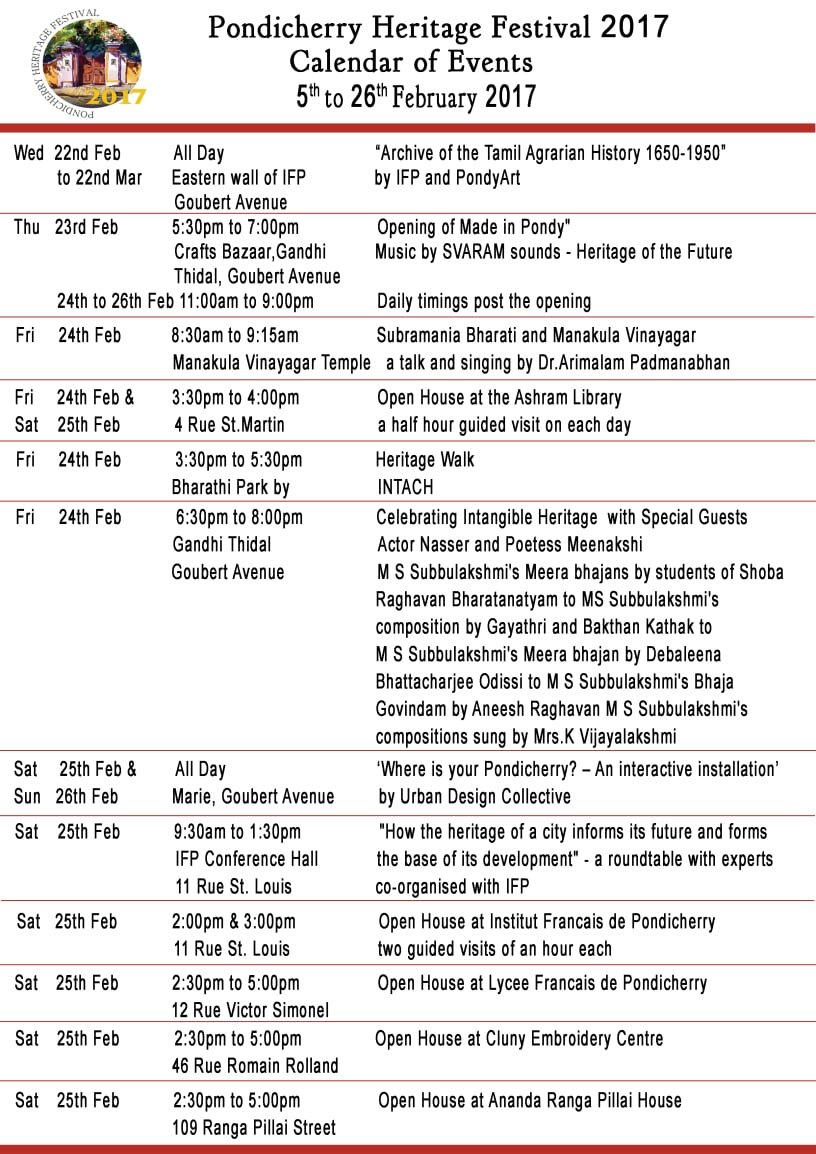
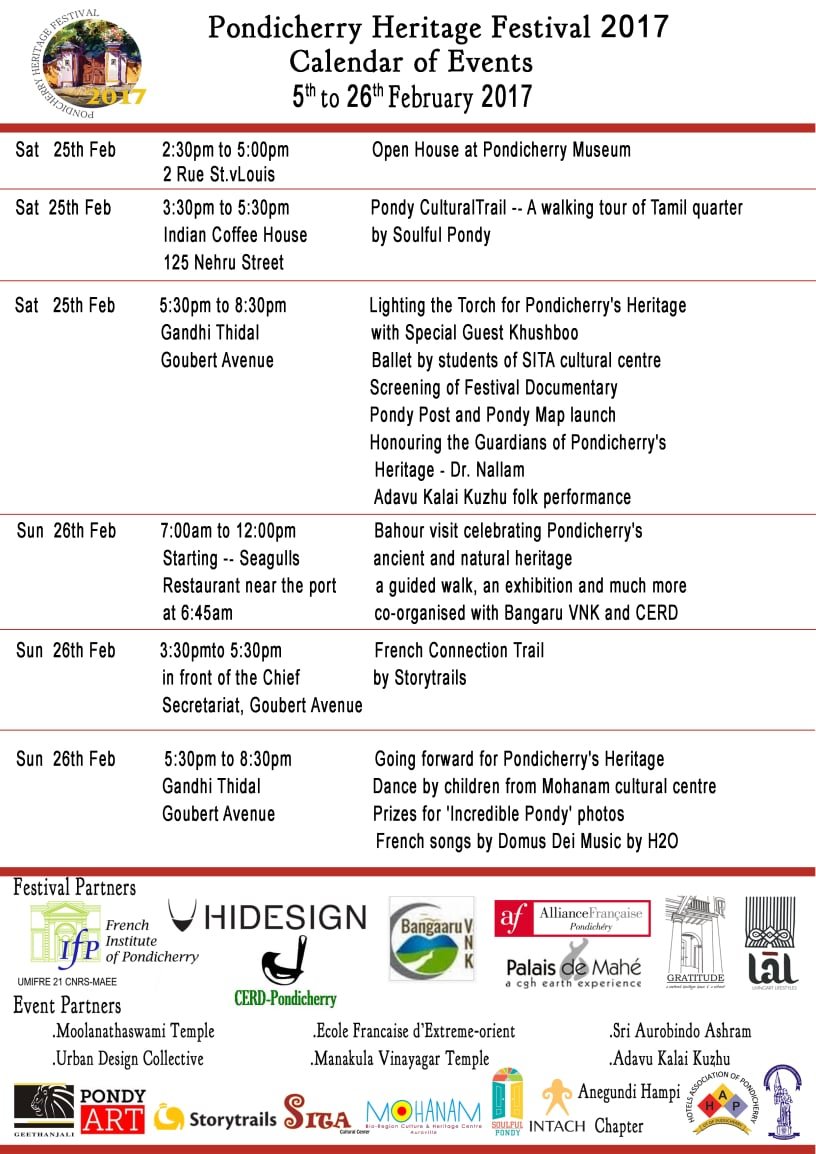
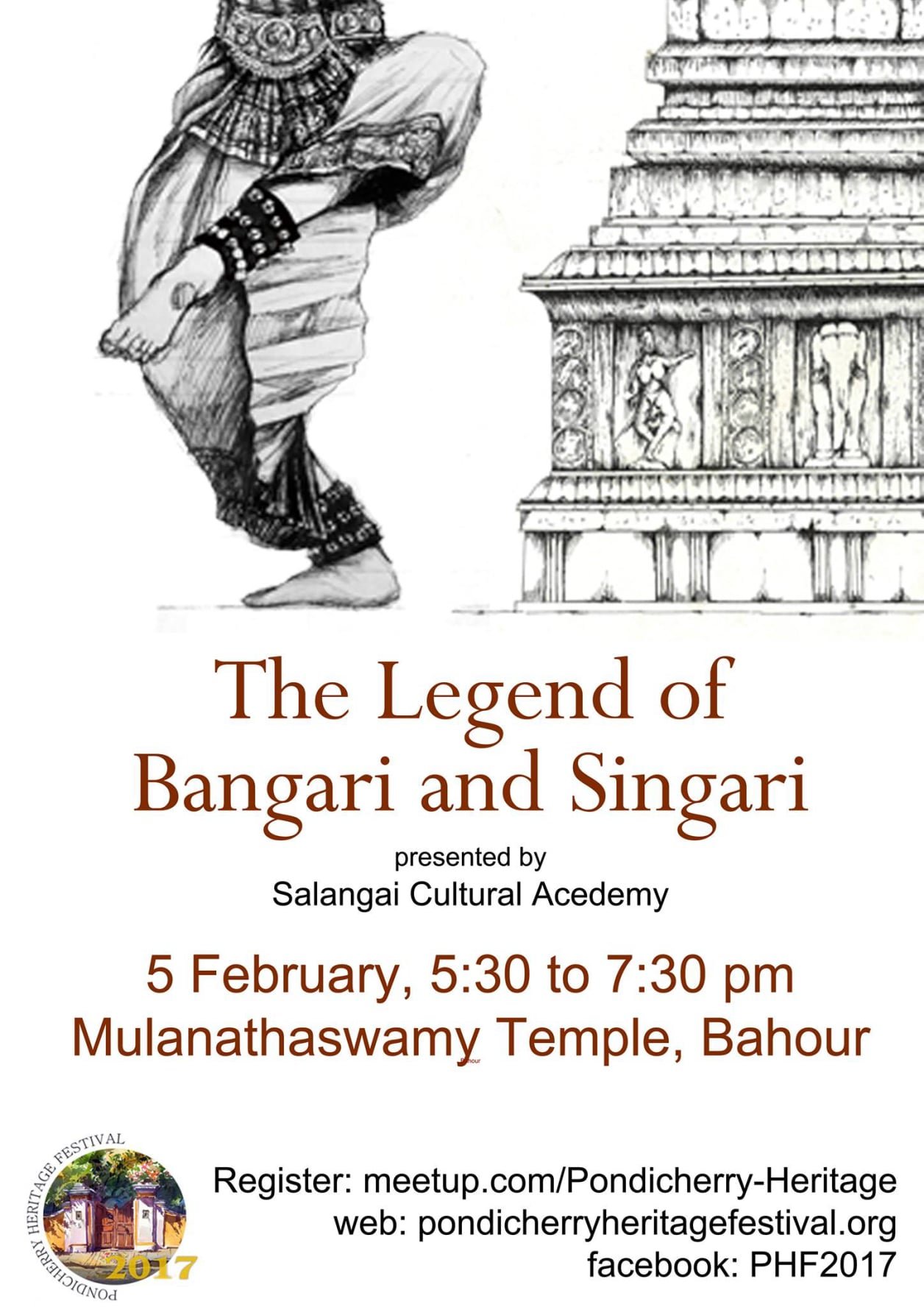
This year’s festival was focused on Bahour, one of Pondicherry’s most ancient areas, dating to the Chola period. The festival was inaugurated at Thiru Moolanatha Swami temple, Bahour, Pondicherry with a dance drama, portraying the legend of the two sisters who funded the construction of the Bahour canal and created the lake. The temple is under the purview of the Archaeological Survey of India (ASI). The entire final morning of the festival was spent in Bahour, taking in the remains of a heritage dating back over a thousand years.
The Pondicherry Heritage Festival is trying to throw light on this historic, heritage area while exploring with its residents, avenues to develop it as a potential natural, health and eco tourism destination.
ABOUT BAHOUR:
Known in history as Vahoor, Vakur or Azhagiya Chola Chathurvedimangalam, Bahour is a region between the then Ponnaiyar and the Malattar rivers and has a rich history and heritage. It is also known for its meticulous governance system under the Chola, followed by the Pallava, Rashtrakuda and the Vijayanagar kingdoms. Bahour also used to be the capital of 16 Mandalams and at one point of time even had a large dairy farm at Irai Punasseri (currently known as Pinnachikuppam) where thousands of cows were maintained and milk used to be supplied to all the 16 mandalams. Bahour has the historical Thiru Moolanatha Swami temple built by the Paranthaka Chola much before the famous Brihadeeswara Temple of Thanjavur was built. Around this temple, there flourished a green, prosperous town which also had one of the most prestigious Sanskrit Universities of the time. The students who were educated here were looked upon favourably in Kancheepuram and as far as Varanasi due to the rigorous standards of Vedic learning. The presence of this University also gave the name Chathurvedi Mangalam to Bahour. The temple also has the deity of Vedambigai, making Bahour a centre of learning and knowledge.
Another notable landmark of Bahour is the Bahour tank, the oldest in Pondicherry (and second largest after Oussudu which was built much later), for which an elaborate operation and maintenance system existed from the Chola period (as proven by stone inscriptions). During a period of famine in Bahour's history, two aristocratic, unmarried, young sisters who lived on the South Boulevard of Bahour - Bangari and Singari - donated their wealth for the deepening of the Bahour tank, strengthening of the tank bund and the digging of a feeder canal from the then Thenpennai River to the Bahour tank. This later became the famous Bangaru Channel, the lifeline for Bahour. Bahour still has one of the few operational irrigation systems developed by the Cholas, consisting of a cascade/chain of tanks wherein about 27 tanks are linked through three main channels which irrigate the land. The region also possesses an extensive drainage system which protects the area from flooding even in times of extreme rain.
Bahour is rightly called the Neer Kalanjiyam (Rice Granary) of Pondicherry. It is also a bird sanctuary, where birds of more than 100 species have been spotted and is already on the e-bird map of India.
THE BEGINNING, A DANCE DRAMA – “THE LEGEND OF BANGARI AND SINGARI”
On the 5th of February, people from Bahour and Pondicherry were eagerly waiting for the first event of the Heritage Festival, “The legend of Bangari and Singari” – A Bharatnatyam dance drama by Jayashree Narayanan’s Salangai Cultural Academy, inside the Thiru Moolanatha Swami Temple, Bahour. .
Our guests of honour for the evening were Thiru Lakshminarayanan MLA, Raj Bhavan and Parliamentary secretary to CM and Thiru Danavelou MLA, Bahour. The event commenced with festival co-organiser, Sunaina Mandeen elaborating on the objectives of the festival, Thiru Lakshminarayanan emphasising on the significance of “water” and Thiru Danavelou mentioning the beauty of Bahour and his future agenda.
The 22 dancers of Salangai Cultural Academy then stole the hearts of the audience with their riveting performance.
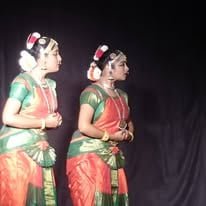
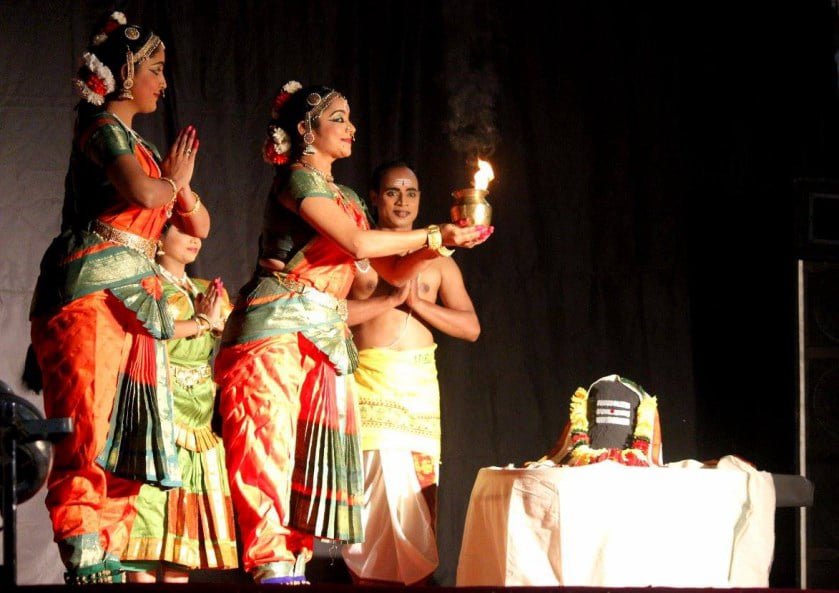


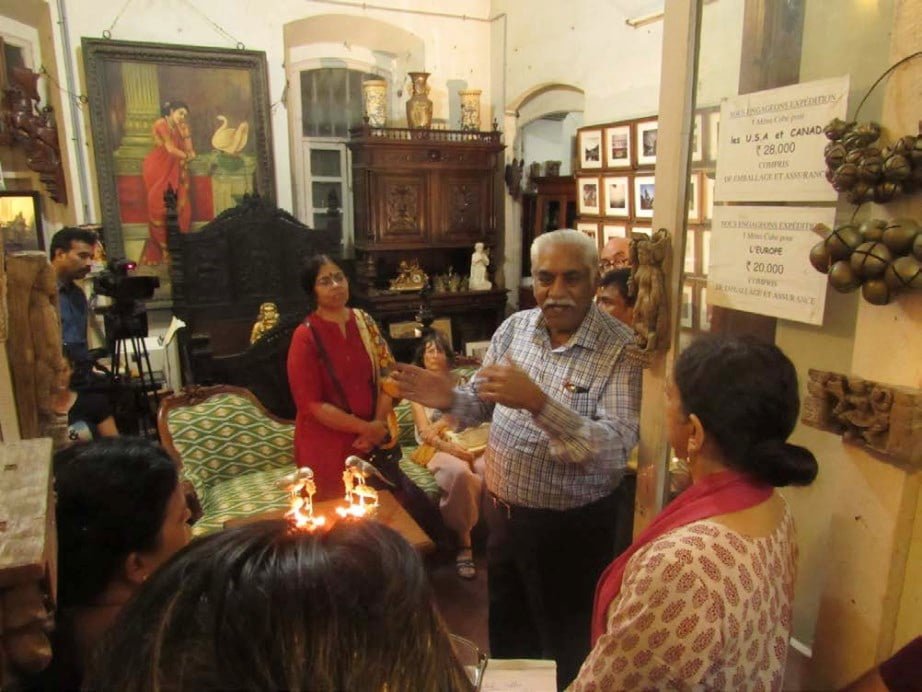
PHOTO EXHIBITION – “10 YEARS IN PONDICHERRY” - LOCAL LIFE & ARCHITECTURE IN PHOTOS BY DR.VEERAN KONERU
On the 10th of February, a pleasant Friday evening, several participants gathered at Geethanjali Artifacts in the French Quarter of Pondicherry.
The event was inaugurated by lighting the kutthu vellaku, a tradional south Indian lamp by Dr. Nallam, Thiru Lakshminaryanan MLA, Bitsta Samantaray of PPH (People for Pondicherry heritage), Ashok Panda of INTACH and Sunaina Madeen of PondyCAN.
Dr. Nallam walked us though the history of Pondicherry architectural heritage, focussing on how he has seen Pondicherry evolve as a city from his childhood. He touched upon the issue of destruction of beautiful heritage structures in the Tamil town and his constant dissent against the demolition of the old buildings and his personal effort in their conservation.
Dr. Veeran spoke about his exhibition of photos inspired by Pondicherry, 10 per year of stay in Pondicherry
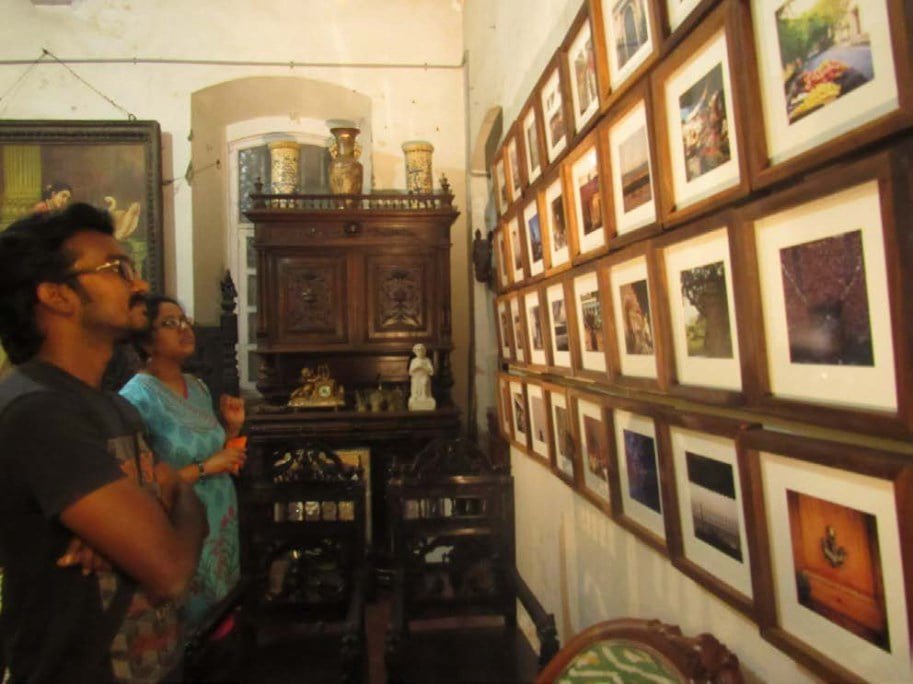
------
BOOK RELEASE FOR "AATHMATTHIL THILAITTAVAN" - A COLLECTION OF 100 VERSES OF POEMS BY "VARAKAVI" SHRI SUBRAMANIA SWAMIGAL
On 11th of February, 2017, paintings by kids from a special creative school were displayed for 2 days. The Exhibition, a contribution from Natura Foundations under the ongoing Suvadugal Project was inaugurated at Natura Femina, 38 Mariamman Koil Street, Kathirkamam, Pondicherry. The exhibition featured 27 sketches by kids and 42 paintings by the student facilitators from Bharatiar Palkalai Koodam.
There was also a book launch to pay tribute to the Late "Varakavi" Shri Subramania Swamigal, the trustee of Natura Foundations. Mr. Swamigal had contributed over 10000 poems in the Tamil Bhakti tradition during his lifetime, out of which a collection of 100 poems were published and released as the first book. The book was entitled "Aatthmatthil Thilaithavan" (The one who revels in his soul) and was presented as a dedication to the city of Pondicherry.
On the 12th of February, the Sri Aurobindo Ashram Library, a beautiful heritage building in Pondicherry was host to a contemporary Indian dance performance, choreographed by Ms. Poojarani. The venue was overflowing with people before the start of the evening's performance.
The dance-drama narrated the story of a young village dancing girl whose heart was as pure as gold. The birds from paradise were unable to resist her innocence and purity and her unconditional love of nature; so much so that they came to earth and started dancing along with her. The birds of paradise brought the Nature God along with them and blessed the dancing girl with gold, as a token of affection. At the same time, there also lived an evil and greedy queen, who was informed about the girl by one of her loyal servants.
She grabbed the gold from the dancing girl, locked her up in jail and tortured her, hoping to lure the birds of paradise. The birds flew down to rescue her but eventually the evil queen beat them down, captured and tortured them too. Finally, the Nature God appeared to rescue the young dancing girl and the birds of paradise and punished the greedy queen. The final scene portrayed the girl dancing happily ever after with the birds.
This performance, a contribution of INTACH Anegundi - Hampi Chapter, charmed the whole gathering.

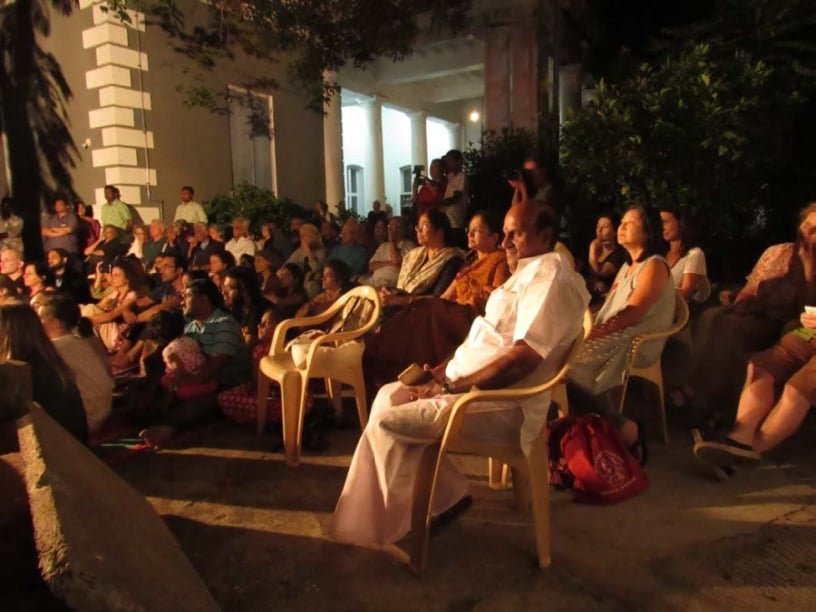
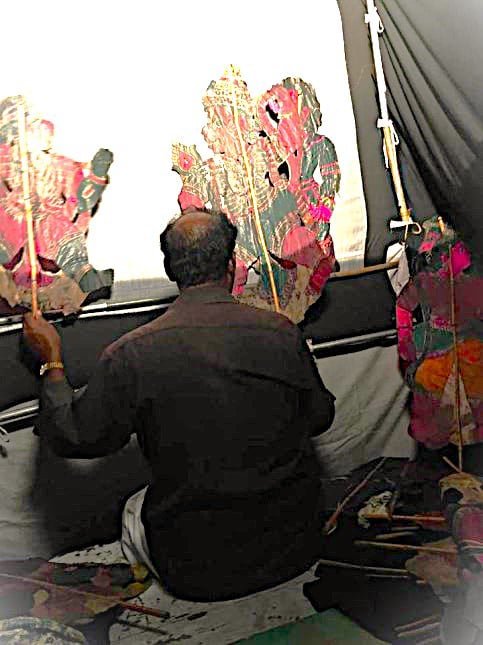
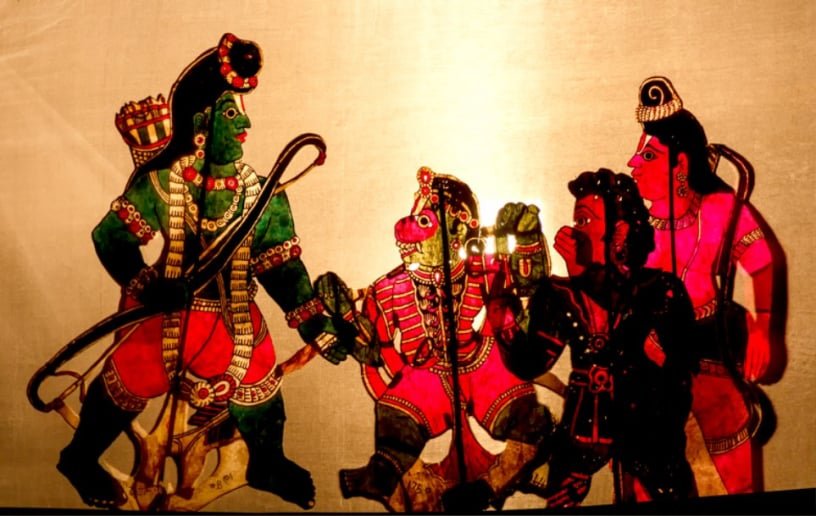
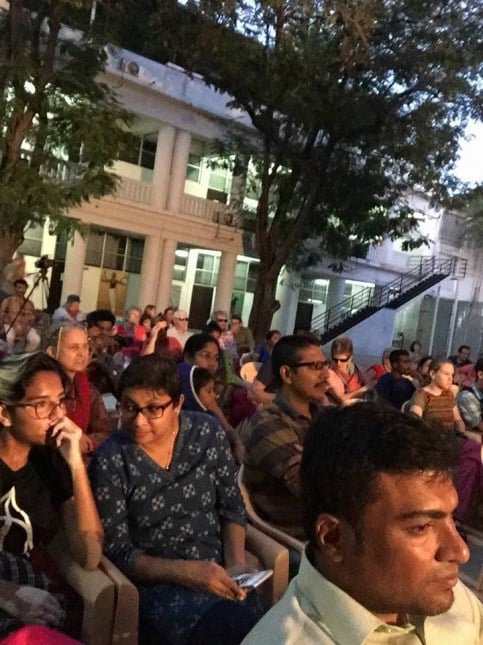

“HISTORY OF MAGIC IN INDIA AND FRANCE” – A TALK AND A MAGIC SHOW BY FRENCH MAGICIAN LAWRENS GODON ORGANISED BY THE ALLIANCE FRANCAISE OF PONDICHERRY
In the packed auditorium of the Alliance Francaise, Lawrens Gordon kept the audiences guessing with his optical illusion, sleight of hand, coin manipulation and much more as he talked about the connection of magic in India and France.
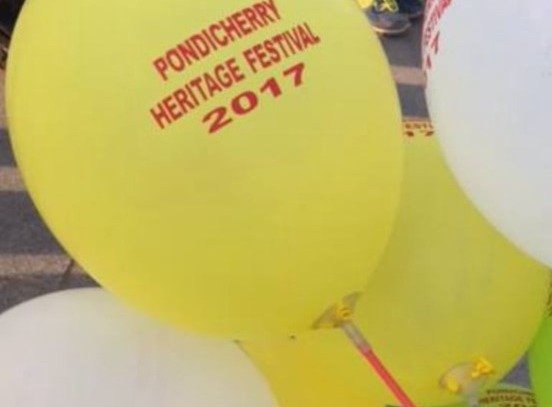


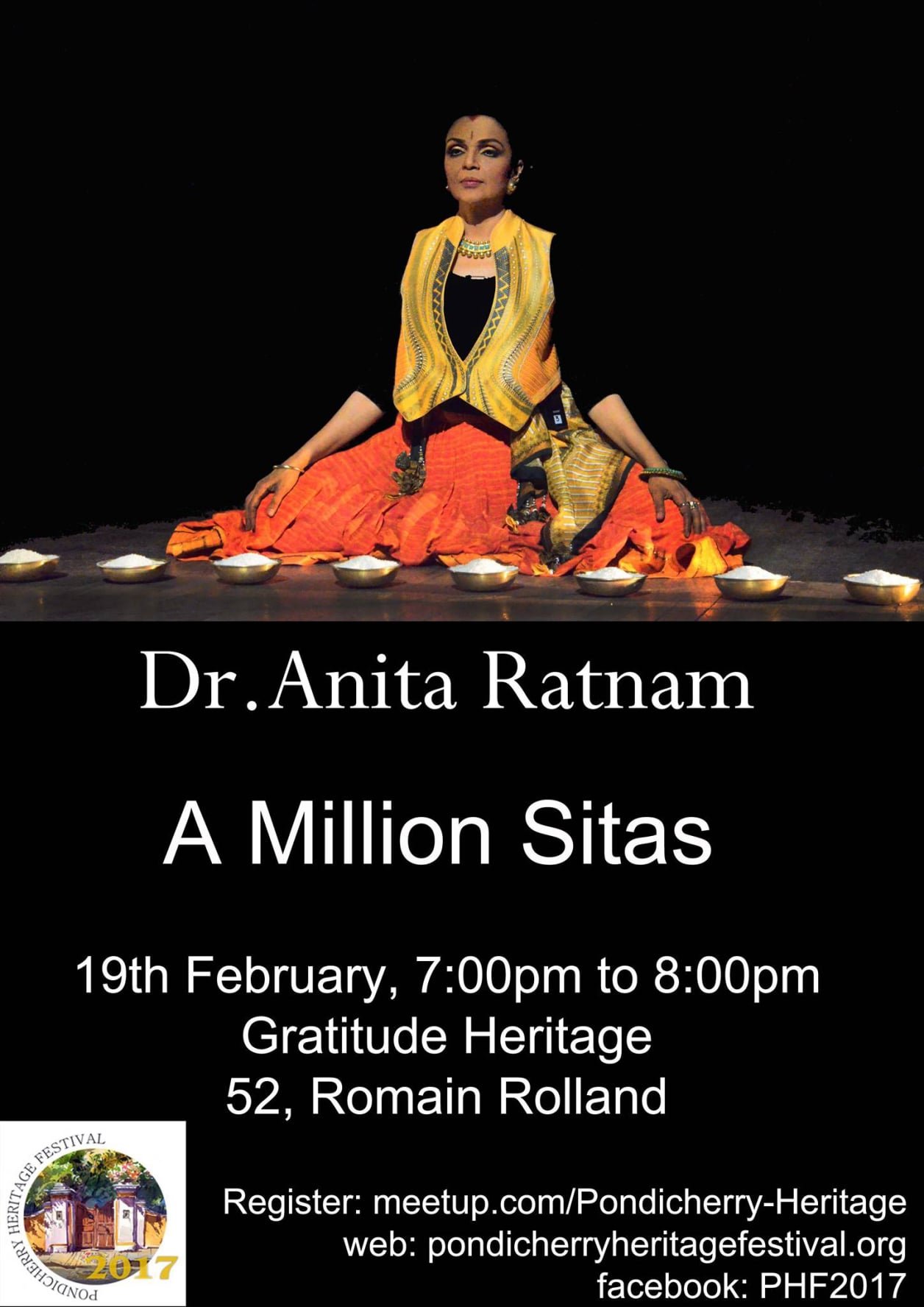
“A MILLION SITAS” BY BHARATNATYAM DANCER ANITA RATNAM
On Sunday evening, in the garden, at Gratitude Heritage, Anita Ratnam’s ‘A Million Sitas’ offered a different viewpoint on some key female characters in the Ramayana -- Ahalya, Manthara, Sabari, Mandodari and Surpanakha -- all bound by the common thread of Sita’s questioning yet compassionate persona. The performance in Harikatha style, collated wide-ranging inputs from theatre, mime, classical dance, music and oratory. Sharanya Krishnan’s alluring singing throughout the performance was the perfect accompaniment to this mesmerising performance, leaving the audience in tears at the end.
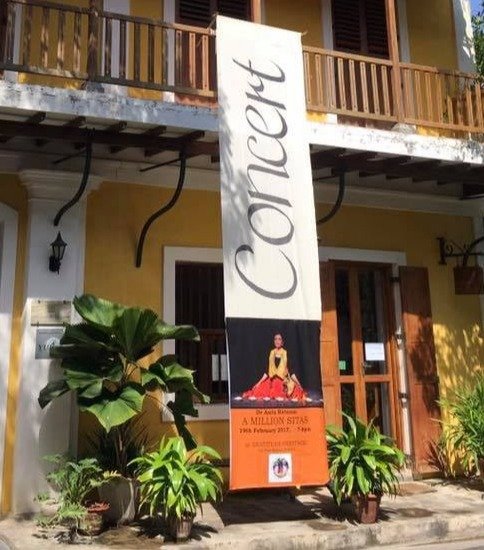
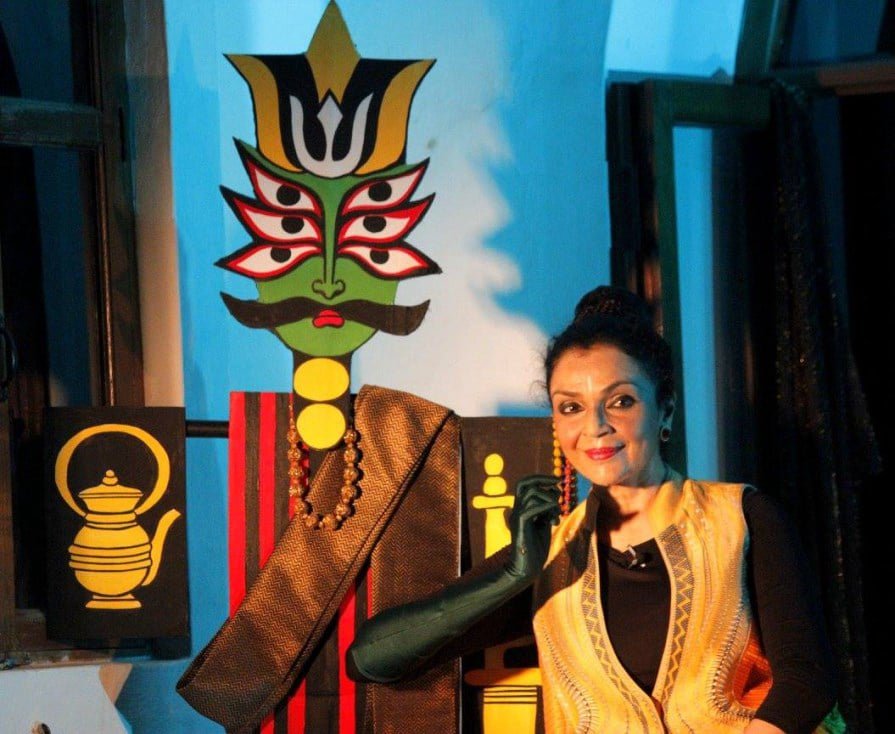
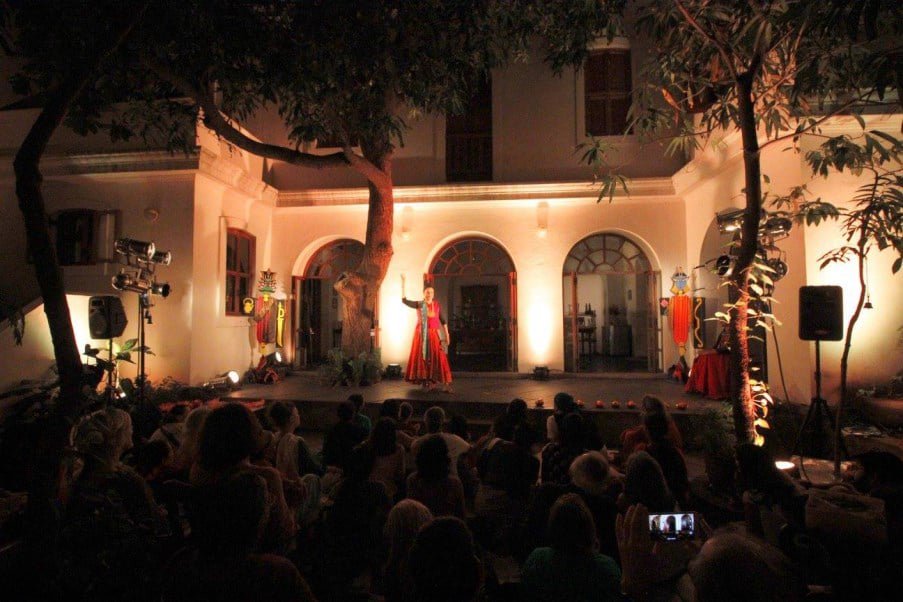
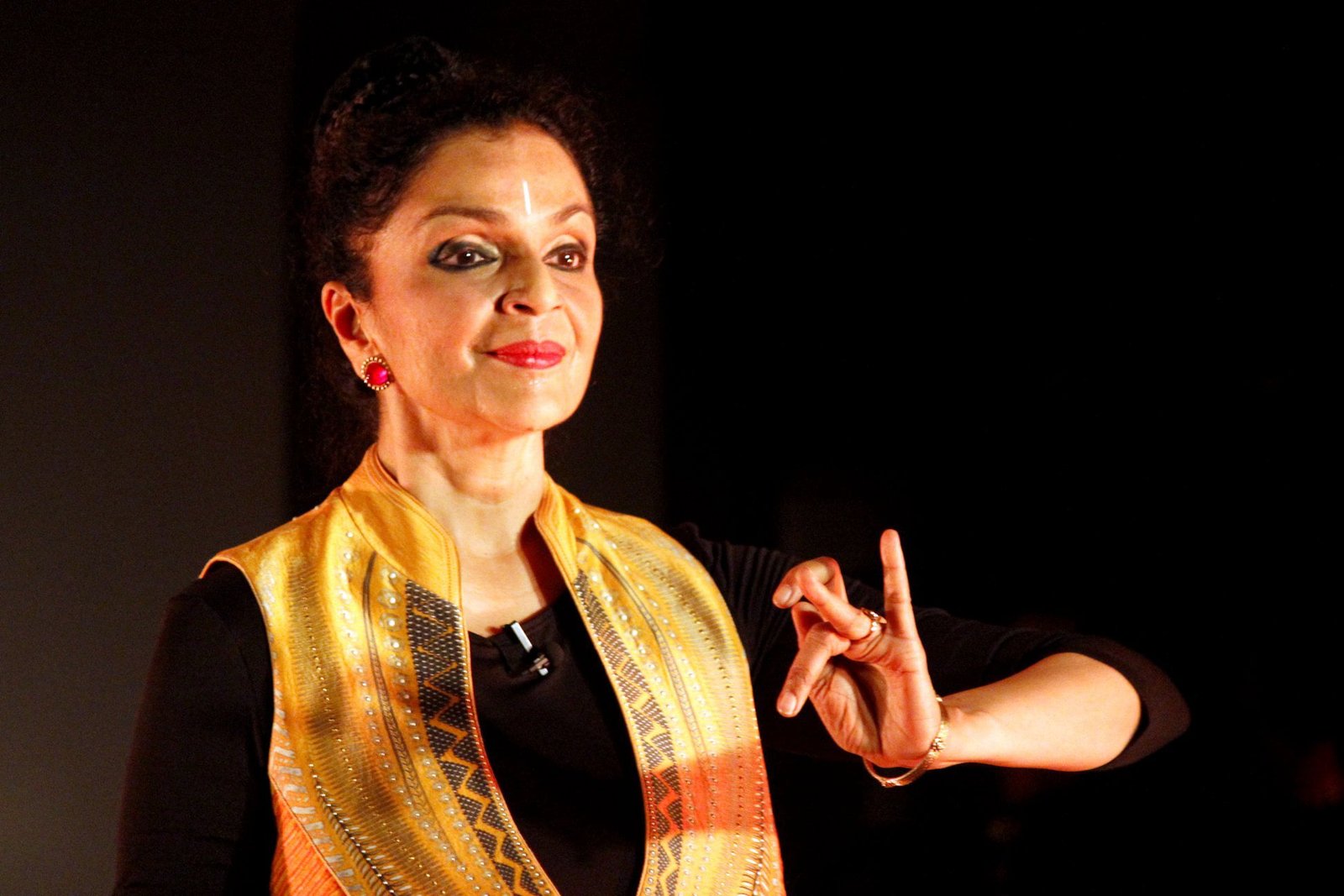
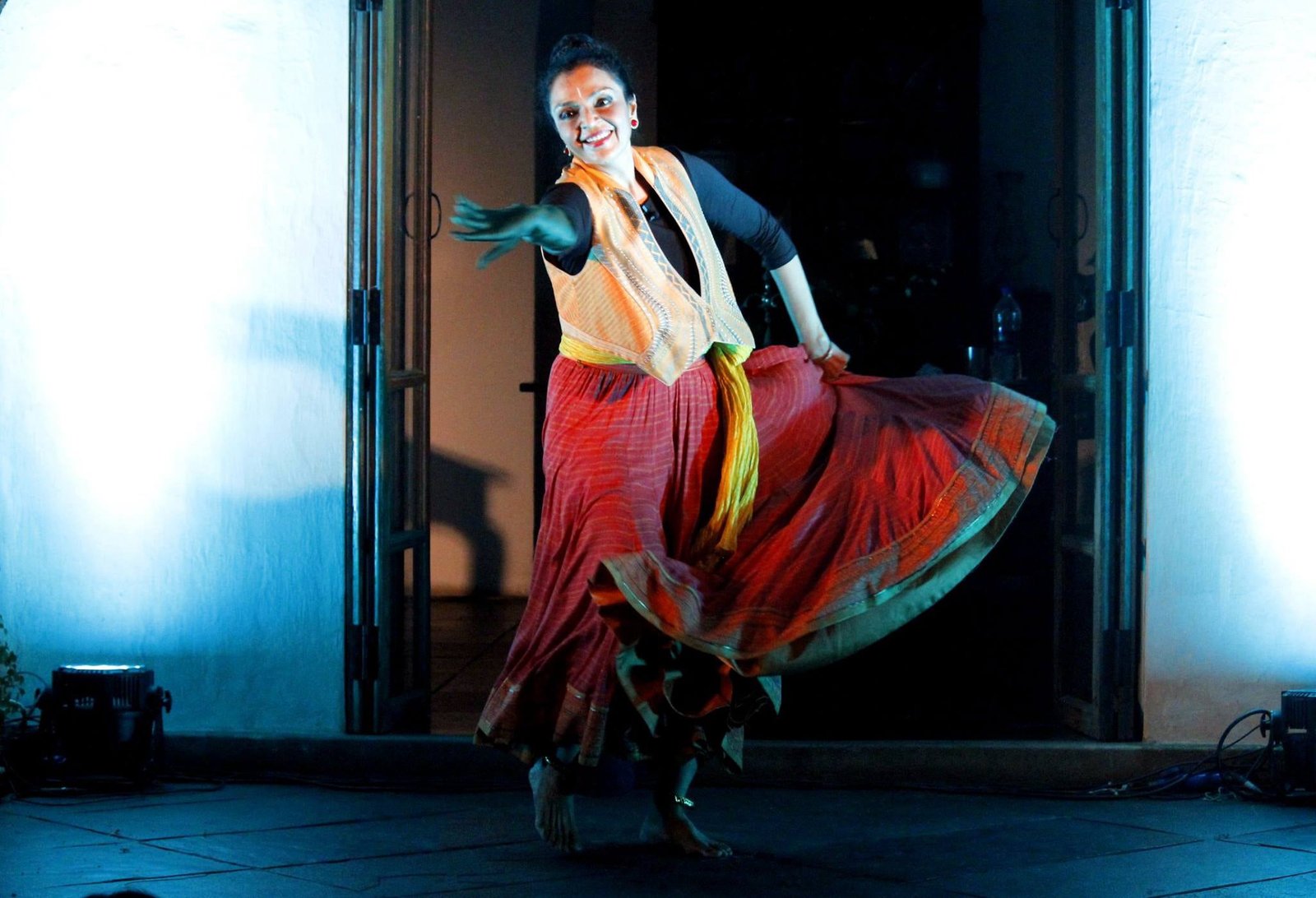

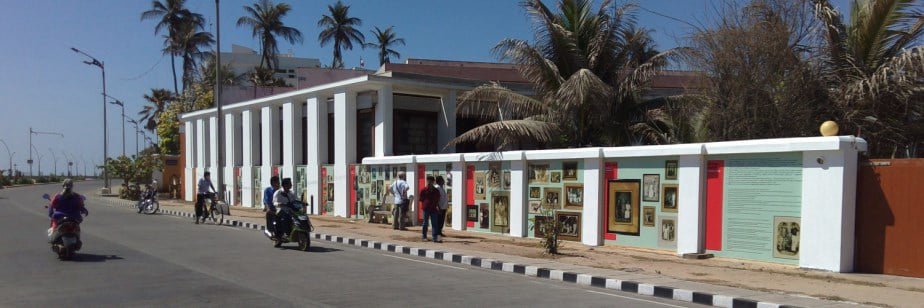
EXHIBITION OF “ARCHIVE OF TAMIL AGRARIAN HISTORY 1650-1950” BY FRENCH INSTITUTE OF PONDICHERRY AND PONDYART
The French Institute of Pondicherry (IFP) and PondyART came together to put up a month long open exhibition on the Eastern wall of the IFP, Goubert Avenue. The display captured the attention of all passing by the beach road, besides those to came especially to see it.
OPEN HOUSES
Along the lines of the ‘journee de patrimoine’ in France, an enormous celebration of the country’s rich architectural heritage, the festival conducted several guided tours of well preserved public and private heritage buildings. At Ecole francaise d’Extreme- Orient (EFEO) and Institut Francais de Pondichery (IFP), there were two, hour-long guided tours where visitors interacted with researchers and got to know a little bit about the research going on there which spans a wide range of subjects.
Open House Days were organised at the following heritage buildings as a part of the celebration of the Pondicherry Heritage Festival.


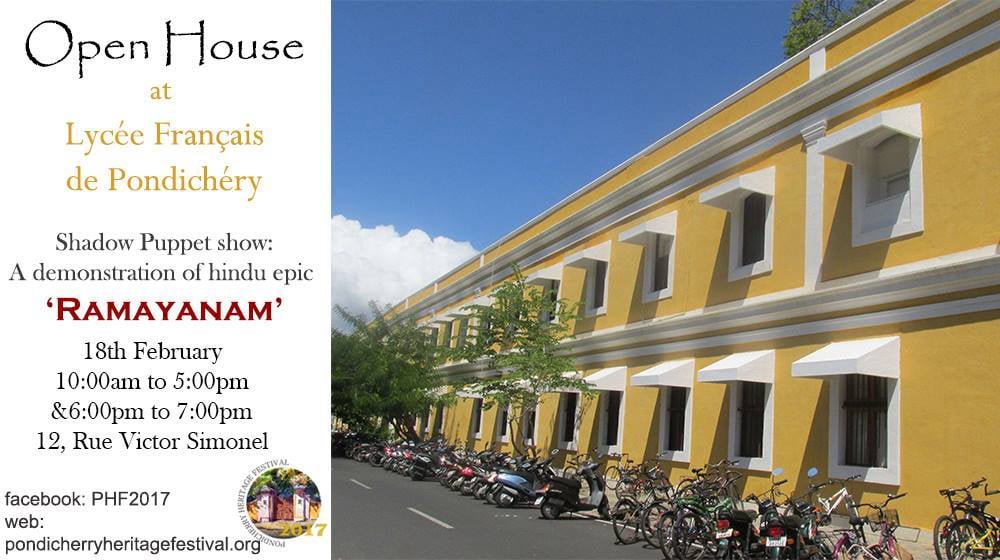
Lycee Francais
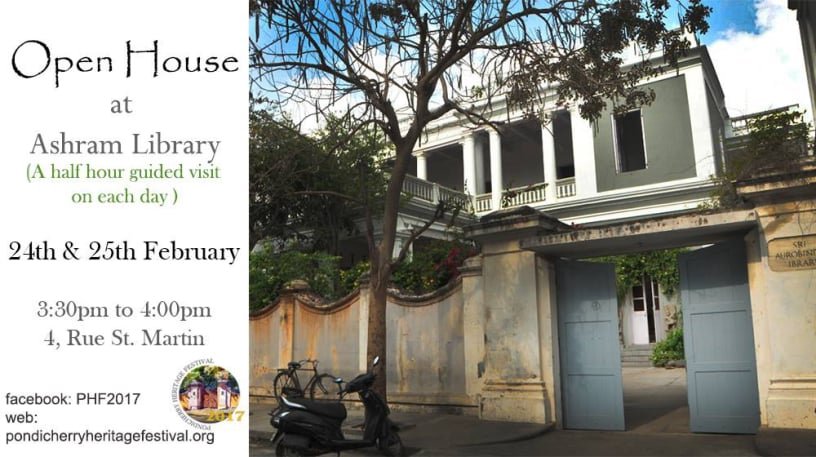
Sri Aurobindo Ashram Library

Cluny Embroidery Centre
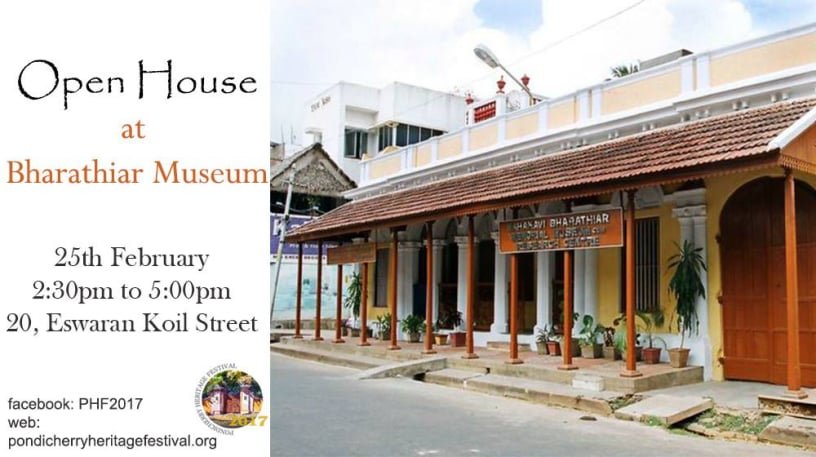
Mahakavi Bharathiar museum
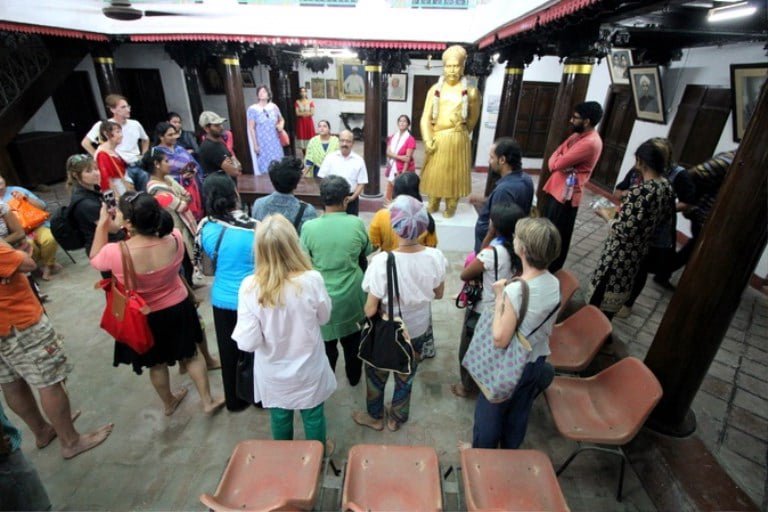
Ananda Ranga Pillai Mansion

Urban Design Collective conducted a late evening and an early morning walk - “Revisit Pondicherry – A Jane Jacob inspired photo walk”

INTACH conducted “Heritage walk” – highlighting architecture of the French quarter
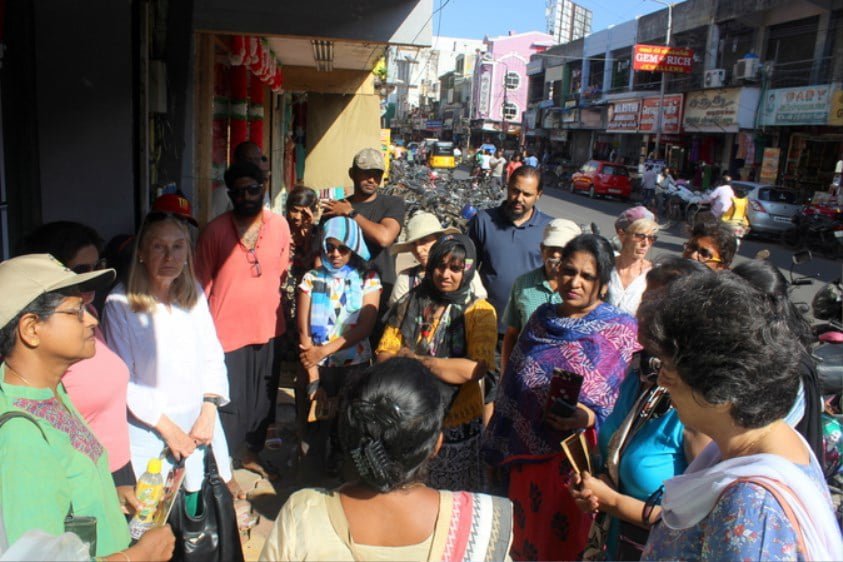
Soulful Pondy conducted “Pondy cultural trail – A walking tour of The Tamil Quarter”
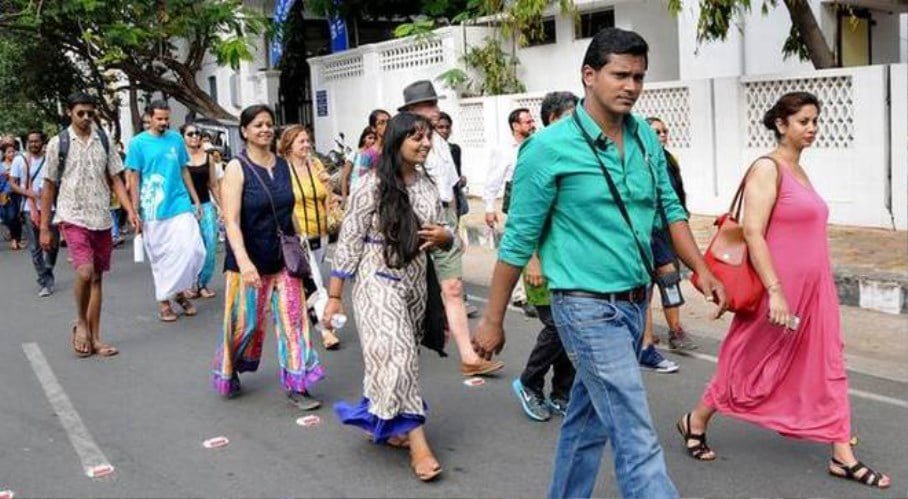
StoryTrails conducted – “French Connections” – a walkthrough of the French history in Pondicherry.



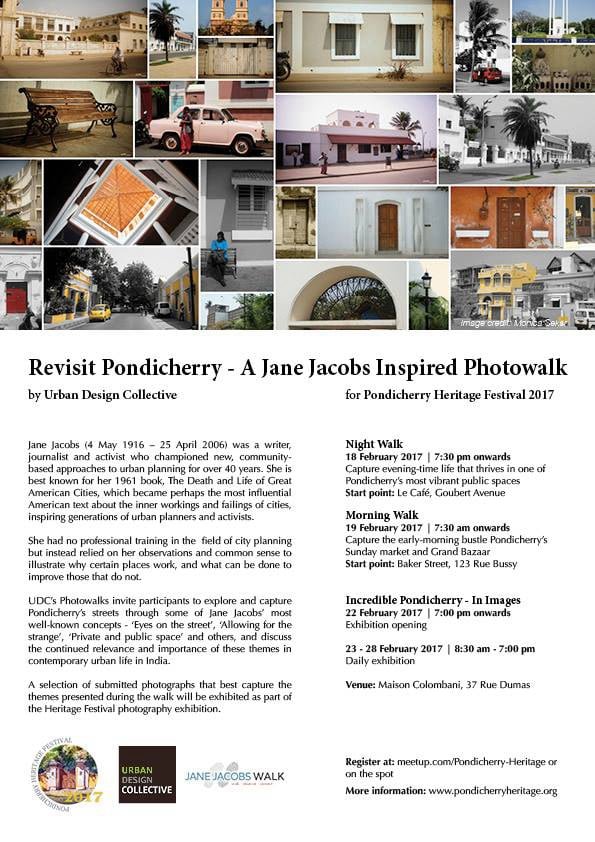



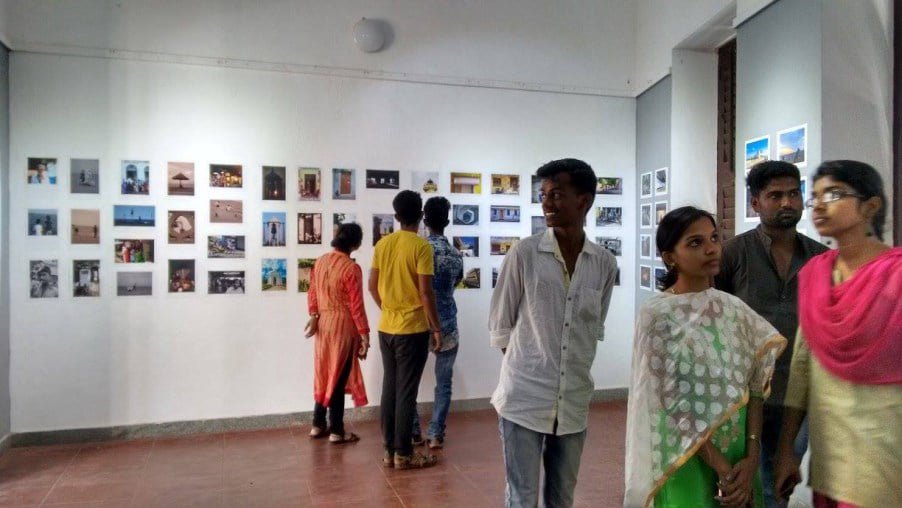
The region of Pondicherry has a long history of creativity and entrepreneurship, with international trade dating back to the beginning of the Common Era. The Pondicherry area also has a rich heritage of local manufacturing. The Periplus of the Erthraen Sea, a Roman merchant guide written in the 1st century AD, references a marketplace right outside of modern day Pondicherry. In 1937 Roman pottery was found there and later excavations confirmed that the local inhabitants traded with Rome throughout the 1st century.
The Chola rulers prided themselves in their cotton, and silk manufacturing and textile guilds in south India exported high quality clothing materials that Roman women particularly enjoyed. Along with textiles, the Pondicherry area exported spices, jewels, and metal works. By the end of the 9th century, the Chola dynasty had established itself as a trading powerhouse, sending Tamil merchants up the east coast of India and into Southeast Asia and China. The international trade continued until the 13th century.
In 1674 the French East India Company set up its first trading center in Pondicherry. Over the subsequent period of colonisation, Pondicherry sent goods to several European countries. The region’s strong history of manufacturing allowed Pondicherry to continue to impress foreign countries with the quality of their diverse products.
The heritage of creativity and entrepreneurship continues to this day. Today the region still has many companies producing a wide variety of products, most of them hand-crafted that are known around the world. ‘Made in Pondy’ celebrated this at the Crafts Bazaar.
Ponfab had a loom on demonstration along with their line of fabrics while LAL were doing live demonstration of their hand block printing where people could choose the designs and colours and have bags, scarves or saris printed right in front of them. Saran exports displayed their very high count and high quality bed and bath linen for the first time in Pondicherry as they normally go straight from their factory here to a select group of luxury hotels in the Middle East and the UAE. Golden Bridge Pottery, the ‘mother’ pottery out of which have sprung so many potteries not just in the Pondicherry-Auroville region but the whole country, had their gorgeous stoneware in an array of glazes, from bowls and plates to cups and vases, beautifully displayed. There was also a table displaying the exquisite embroidery from the Cluny Embroidery, done on pure white cotton. Two Auroville potteries – Mandala and Windglaze along with two individual potters Supriya Menon Meneghetti and Indrani Singh Cassime had their wares displayed playfully in carts and some of them even had special “Made in Pondy” pieces. Two stalls at either ends of the crafts bazaar charmed everyone with their colourful display of handmade paper, the Sri Aurobindo Handmade paper and Auroville paper, handmade but so different, brightly coloured and thoroughly charming, hard to resist products. In the midst of this were the jams, chutneys, cookies, muesli and many more delicious natural products from Naturellement in Auroville. While on one end there was Senteurs, the perfumery of the Sri Aurobindo Ashram with its fragrances, skin fresheners and rose water being made and perfected over the years since the late 1950’s, and Auroshikha Incense which has also become synonymous with Pondicherry, at the other end was Auroville’s Maroma with many more high end products to complement their incense including bath and beauty products, soaps, essential oils and more – all so fragrant. While Auromics from Auroville displayed their knitted clothing, Auroknits and their Amano line of leather bags, Disdis had a display of clothing by designer Disa and handmade jewelry by her Italian friend. Offbeat had their stall full of brightly coloured t-shirts and bags with interesting, quirky “offbeat” messages, the Puducherry Khadi and village industries board had all their traditional well-loved khadi products. In the midst of all this was a local master village potter demonstrating his terracotta pot making and also had on display a range of his products, including a pair of beautiful Ayyanar horses he made for the Heritage Festival, which now adorn the open square at the INTACH office. Pondicherry Sri Lakshmi Jewelery who were celebraitng their 80th anniversay, had on display their line of silver jewelery and other silver items and was a crowd puller, as was the Svaram stall from Auroville where the wind chimes sang different ragas and people could try their hand out at playing several of the fascinating musical instruments on display. Geethajali Artifacts displayed a whole range of antique furniture from the nearby region which bring many antique lovers to Pondy, be it traditional Chettinad columns or beautiful Kerala brass uralis and painted boxes to the more local French and English Colonial furniture still to be found in some of the heritage houses around this region. Aquarelles water colour studio displayed Djearamin Ejoumale’s lovely watercolours depicting the street life and beautiful ambience of Pondicherry. The festival logo of the doorway comes from one of his paintings. Upasana design studio from Auroville primarily displayed their small steps bags, the bag with a message of ‘say no to plastics and reuse’. They had made a special festival bag with the logo of the People for Pondicherry’s Heritage inviting people to come and join hands to save our heritage. And finally, there was Pondicherry’s flagship international brand Hidesign, which started out small all those years ago, making handmade leather bags using natural dyes and continues making their mark in the world with their whole range of world-class products that are always incorporating newer ideas, but continue to be made in that old traditional way.
CELEBRATING PONDICHERRY’S INTANGIBLE HERITAGE THROUGH MUSIC & DANCE BY LOCAL ARTISTS
On 24th February, Friday monring and Maha Shivaratri day, musicologist and poet Dr. Arimalam Padmanabhan sang the poems of Mahakavi Bharathiar dedicated to Manakula Vinayagar at the temple, a rare honour, delighting the audience as well as visiters to the temple.

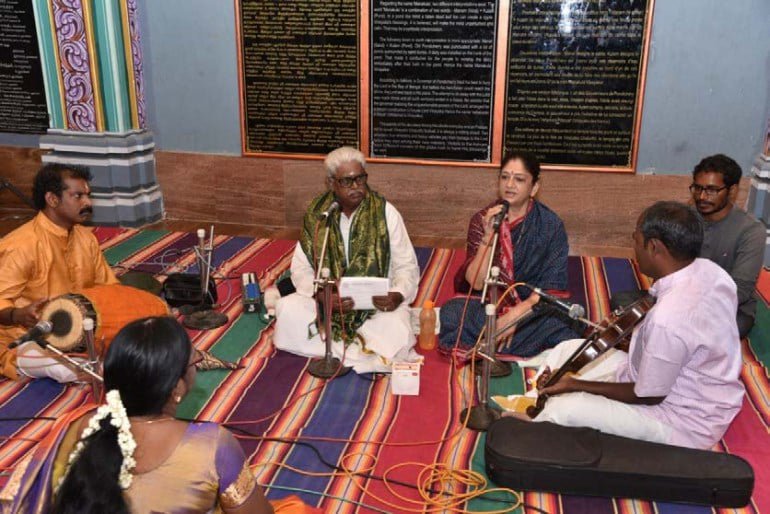

The visit to Bahour, the rice bowl of Pondicherry, located 21 km south of the city, took place on Sunday morning, 26th February, to emphasize the natural and ancient heritage of the region. In the early hours of the day, Alexander and Susanne from PondyCAN and Natesa Iyer from PPH guided nearly 30 people into the waiting bus to take them to Bahour. At 7:30 AM, the group arrived at their first destination, the Ayyanar Temple located at the base of the north eastern bank of the Bahour lake. Ayyanar is a guarding diety who protects the people and his temples are mainly located in rural areas, near waterbodies and sacred groves surrounded by trees and medicinal plants. From here, while enjoying a short walk along the Bahour Lake, the second largest lake in Pondicherry, the group could spot some rare birds, since the lake is located on the migratory path of central south-asian birds and is a hosting and breeding ground for various bird species.
At the northern end of Bahour Lake, the group walked down to see the Bangari and Singari inscriptions in a 200 year old sluice structure. These two legendary sisters played an important role in the extension of the ancient tank-system of Bahour, by spending all their wealth to build the feeding channel to the nearby Ponnaiyar river and strengthen the tank’s bunds thus overcoming the famine of their time. The Tank System in Bahour, consisting of 27 tanks, dates back to the Chola period and is still in use. The system encourages the use of water from its tanks, which while preventing run-off to the sea, allows the recharge of groundwater and also provides water for irrigation to this primarily agrarian community. At the southern bank of this lake, near Bahour town, Raghunath T. P. from Pondicherry Science Forum (PSF) and Centre of Ecology and Rural Development (CERD) spoke about rural agriculture, which boasts of a history as old as the ancient tank system. In earlier times, the region was well known for its dairy products from Iraipunasseri, now known as Pinnachikuppam. In recent years, grain farming has assumed a more important role. Large parts of Bahour have shifted to organic farming today.
The visit to the Moolanatha Swami temple, dating to the pre-Chola period, with visible influences to its architecture from all the subsquent periods right upto the colonial period, was captivating and quite a bit of time was spent by the group walking around the temple compound looking at its exquisite sculptures that adorn the outside walls of the temple. An interaction with the priest who is the 13th generation of priests working in the temple was captivating. Though the temple is under the ASI, it is open to worship. But right now as work is going on and preperations for the kumbhabhishekam underway, the sanctum sanctorum is locked and the diety, Lord Siva can be worshipped in a room nearby. Raghunath T. P. and Natesa Iyer guided the group around the temple and explained the ancient inscriptions on the temple walls, which are a rare archival source regarding community life, tank maintenance and the religious practices of ancient times.
The group then had the opportunity to meet one of the farmers, P. Arjunan, Secretary of Keezhparikalpet tank association. His association has been undertaking huge efforts to preserve the natural heritage and provide healthy food to the people. Since 1999, the Tank Association has been involved in the rehabilitation and maintenance of the tank system, with active participation from all stakeholders. They take into account the traditional knowledge of older generations and also current necessities.
Mrs. Arul Selvi, the Director/Principal of the Professor Annoussamy Higher Secondary School in Bahour, who has taken on the responsibility to ensure that the kids receive a holistic education in the school started by her grandfather, was generous enough to provide her Smart-Multi-Media-Classroom to the group for a breakfast break. A documentary on Bahour was screened there. https://vimeo.com/205272654/04e0a343c1
This short film was directed and produced in record time for special screenings during the festival. This was a combined effort by Raghunath T. P., (PSF) and (CERD), Jeremias Eichler, a cinema and television technician from Germany, Susanne Wengler, an architect from Germany and a volunteer at PondyCAN and farmers, teachers, students, workers, fishermen as well as experts in architecture, history, biodiversity and agriculture. The movie presented the historical, cultural, environmental and social prosperity of Bahour. It is hoped that the Bahour inhabitants as well as people of other rural areas are inspired by these stories where these residents are actively designing the future of their community and environment in a sustainable way.
Another short walk through the small streets of the city, past the old church, the panchayat office dating back to the colonial period, and the group proceeded to the Parikkalpattu Lake, where they could see for themselves the efficiency of the Bahour Tank Association.
While digging a foundation for a constrcution project, in the periphery of the Moolanatha Swamy temple, the constrcution crew discovered an overturned stone sculpture lying face down at the bottom. There were two more sculptures but ASI stopped further digging till their experts arrived on the site after the weekend. This discovery of an ancient sculpture just the night before was an added gift to the group’s visit to ancient Bahour.




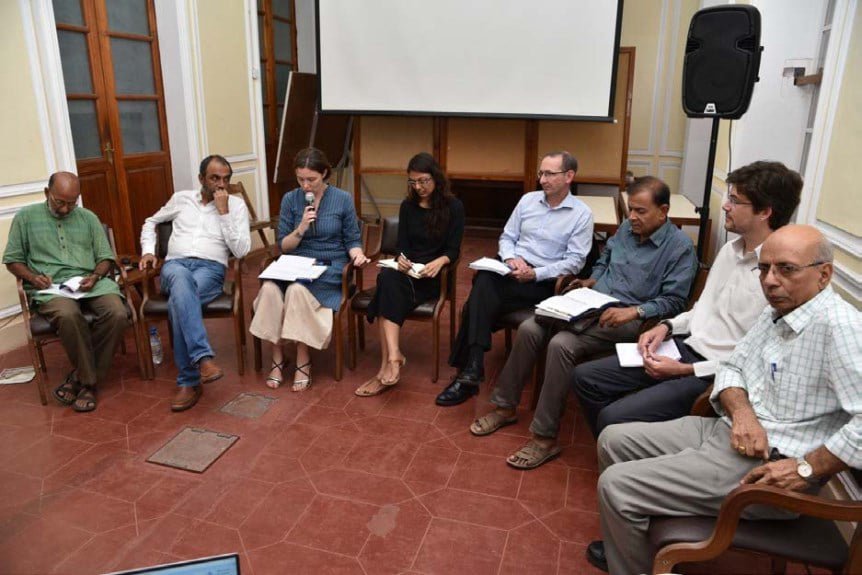
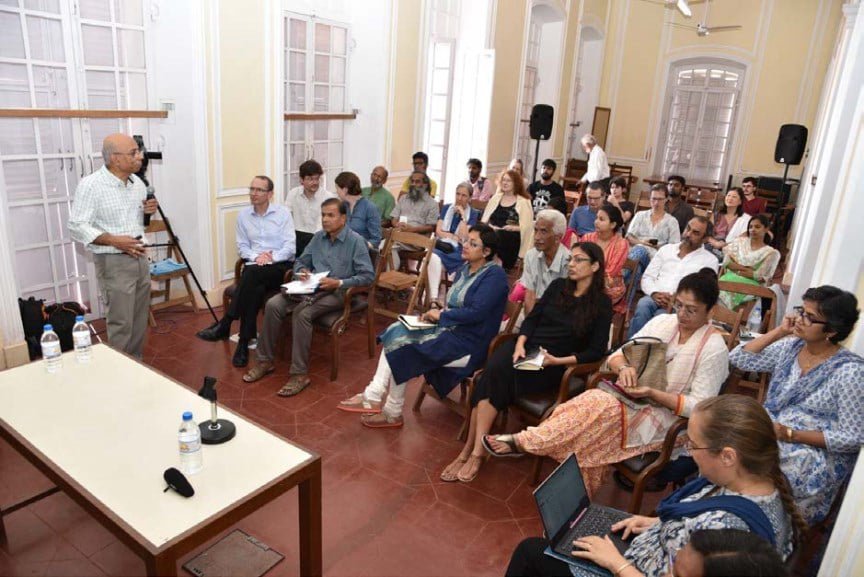
The venue for the final 3 days of the Pondicherry Heritage Festival 2017 was set against the backdrop of a beautiful old heritage building, “Pensionnat des Jeune Filles” school. The structure needs to be restored and the location also served to remind the people of Pondicherry the importance of restoring and protecting heritage structures. (As of 2025, the original structure has been demolished and a new structure is being built with the "old look" and it will continue to be a school for girls.)
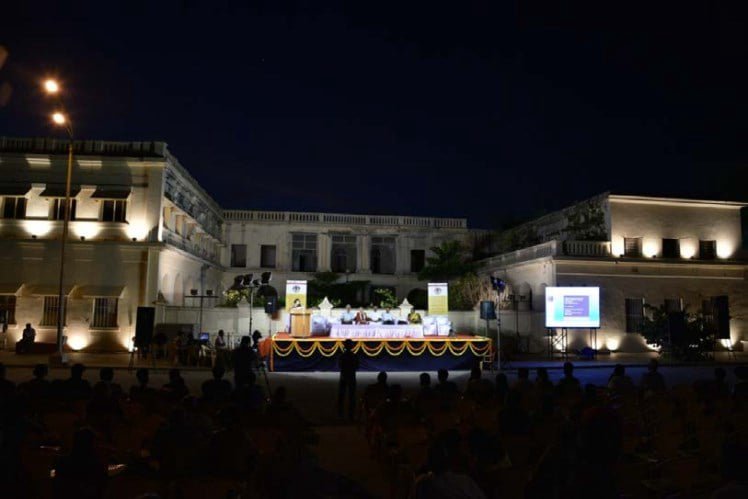
Image Description
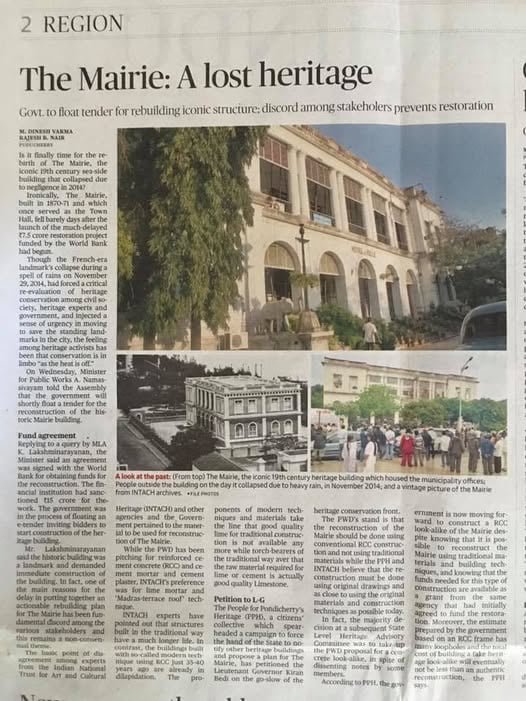
No Code Website Builder